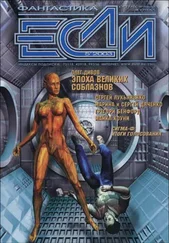Maguire, E. A., Gadian, D. G., Johnsrude, I. S., Good, C. D., Ashburner, J., Frackowiak, R. S., & Frith, C. D. (2000). ‘Navigation-related structural change in the hippocampi of taxi drivers’, Proceedings of the National Academy of Sciences, 97 (8). P. 4398–4403.
Интересно отметить, что за эти изменения, по-видимому, приходилось платить. Передняя часть гиппокампа у испытуемых из контрольной группы оказывалась крупнее, чем у водителей такси, что, возможно, означает, что у таксистов может быть понижена способность вспоминать некоторые виды визуальной информации.
Maguire, E. A., Woollett, K., & Spiers, H. J. (2006). ‘London taxi drivers and bus drivers: a structural MRI and neuropsychological analysis’, Hippocampus, 16 (12). P. 1091–1101.
Konishi, K., & Bohbot, V. D. (2013). ‘Spatial navigational strategies correlate with gray matter in the hippocampus of healthy older adults tested in a virtual maze’, Frontiers in Aging Neuroscience, 5.
Stern, Y. (2006). ‘Cognitive reserve and Alzheimer disease’, Alzheimer Disease & Associated Disorders, 20, S 69–74. Также: Xu, W., Yu, J. T., Tan, M. S., & Tan, L. (2015). ‘Cognitive reserve and Alzheimer’s disease’, Molecular Neurobiology, 51 (1). P. 187–208.
Epstein, R. A., Patai, E. Z., Julian, J. B., & Spiers, H. J. (2017). ‘The cognitive map in humans: spatial navigation and beyond’, Nature Neuroscience, 20 (11). P. 1504.
Rubin, R. D., Watson, P. D., Duff, M. C., & Cohen, N. J. (2014). ‘The role of the hippocampus in flexible cognition and social behavior’, Frontiers in Human Neuroscience, 8. P. 742.
Kuehn, E., Chen, X., Geise, P., Oltmer, J., & Wolbers, T. (2018). ‘Social targets improve body-based and environment-based strategies during spatial navigation’, Experimental Brain Research. P. 1–10.
Omer, D. B., Maimon, S. R., Las, L., & Ulanovsky, N. (2018). ‘Social place-cells in the bat hippocampus’, Science, 359 (6372). P. 218–224; Danjo, T., Toyoizumi, T., & Fujisawa, S. (2018). ‘Spatial representations of self and other in the hippocampus’, Science, 359 (6372). P. 213–218; Okuyama, T., Kitamura, T., Roy, D. S., Itohara, S., & Tonegawa, S. (2016). ‘Ventral CA1 neurons store social memory’, Science, 353 (6307). P. 1536–1541.
Beadle, J. N., Tranel, D., Cohen, N. J., & Duff, M. (2013). ‘Empathy in hippocampal amnesia’, Frontiers in Psychology, 4. P. 69.
Tavares, R. M., Mendelsohn, A., Grossman, Y., Williams, C. H., Shapiro, M., Trope, Y., & Schiller, D. (2015). ‘A map for social navigation in the human brain’, Neuron, 87 (1). P. 231–243.
Vashro, L., & Cashdan, E. (2015). ‘Spatial cognition, mobility, and reproductive success in northwestern Namibia’, Evolution and Human Behavior, 36 (2). P. 123–129.
Duff, M. C., Kurczek, J., Rubin, R., Cohen, N. J., & Tranel, D. (2013). ‘Hippocampal amnesia disrupts creative thinking’, Hippocampus, 23 (12). P. 1143–1149.
В английском языке слово ice (лед) входит в устойчивые сочетания со всеми тремя перечисленными словами: ice cream (мороженое), ice skate (коньки), ice water (ледяная вода).
Warren, D. E., Kurczek, J., & Duff, M. C. (2016). ‘What relates newspaper, definite, and clothing? An article describing deficits in convergent problem solving and creativity following hippocampal damage’, Hippocampus, 26 (7). P. 835–840.
Constantinescu, A. O., O’Reilly, J. X., & Behrens, T. E. (2016). ‘Organizing conceptual knowledge in humans with a gridlike code’, Science, 352 (6292). P. 1464–1468.
«Миссия морского героя».
Coutrot, A., Silva, R., Manley, E., de Cothi, W., Sami, S., Bohbot, V., … & Spiers, H. (2017). Global determinants of navigation ability. Current Biology, 28 (17). P. 2861–2866. Приложение можно скачать по адресу http://www.seaheroquest.com/site/en/.
Loxodonta africana.
Polansky, L., Kilian, W., & Wittemyer, G. (April 2015). ‘Elucidating the significance of spatial memory on movement decisions by African savannah elephants using state—space models’, in Proc. R. Soc. B., vol. 282, no. 1805. P. 20143042, The Royal Society.
Schmitt, M. H., Shuttleworth, A., Ward, D., & Shrader, A. M. (2018). ‘African elephants use plant odours to make foraging decisions across multiple spatial scales’, Animal Behaviour, 141. P. 17–27.
Levi, P. (trans. Wolf, S.), The Truce (Abacus, 1987). P. 349–351.
Здесь и далее цит. по изд.: Леви П. Передышка / Пер. с итал. Е. И. Дмитриевой. М.: Текст, 2002.
Solnit, R., A Field Guide to Getting Lost (Canongate, 2006). P. 10.
От англ. spoofing – пародия, имитация, подмена.
Carr, N. (2013). ‘All can be lost: The risk of putting our knowledge in the hands of machines’, The Atlantic, 11. P. 1–12.
Parasuraman, R., & Manzey, D. H. (2010). ‘Complacency and bias in human use of automation: An attentional integration’, Human Factors, 52 (3). P. 381–410.
https://www.telegraph.co.uk/news/earth/countryside/9090729/ Warning-over-decline-in-map-skills-as-ramblers-rely-on-sat-navs.html.
В русском языке нет устоявшегося перевода английского термина developmental topographical disorientation , но его также можно перевести как «связанная с развитием топографическая дезориентация» или «связанная с развитием топографическая агнозия», чтобы подчеркнуть отличие от приобретенной топографической дезориентации (связанной с повреждениями мозга). – Прим. ред.
Iaria, G., & Barton, J. J. (2010). ‘Developmental topographical disorientation: a newly discovered cognitive disorder’, Experimental Brain Research, 206 (2). P. 189–196.
Aporta, C., et al. (2005). Current Anthropology, 46 (5). P. 729–753.
Carr, N. (2013). The Atlantic, 11. P. 1–12.
Hemingway, Ernest, The Sun Also Rises (Scribner’s, 1926), ch. 13. P. 136.
Цит. по изд.: Хемингуэй Э . Фиеста (И восходит солнце). М.: Азбука-классика, 2005.
Читать дальше
![Дэвид Барри Супернавигаторы [О чудесах навигации в животном мире] [litres] обложка книги](/books/393891/devid-barri-supernavigatory-o-chudesah-navigacii-v-cover.webp)


![Лайза Николь - Винсент и Самый Необыкновенный Отель в Мире [litres]](/books/392769/lajza-nikol-vinsent-i-samyj-neobyknovennyj-otel-thumb.webp)
![Роберт Хофрихтер - Таинственная жизнь грибов. Удивительные чудеса скрытого от глаз мира [litres]](/books/393118/robert-hofrihter-tainstvennaya-zhizn-gribov-udivit-thumb.webp)
![Антон Серовский - Воплощение в подлунном мире [litres]](/books/393561/anton-serovskij-voplochenie-v-podlunnom-mire-litre-thumb.webp)

![Пема Чодрон - Приветствуя трудности [Как жить полноценной жизнью в несовершенном мире] [litres]](/books/400446/pema-chodron-privetstvuya-trudnosti-kak-zhit-polnoc-thumb.webp)
![Барри Пэйн - Новый Гулливер [Затерянные миры. Том XXIV]](/books/406917/barri-pejn-novyj-gulliver-zateryannye-miry-tom-xx-thumb.webp)
![Ирина Млодик - Ограниченные невозможности. Как жить в этом мире, если ты не такой, как все [litres]](/books/418655/irina-mlodik-ogranichennye-nevozmozhnosti-kak-zhit-thumb.webp)
![Дэвид Бишоф - Чужие - Геноцид. Чужая жатва [сборник, litres]](/books/421774/devid-bishof-chuzhie-genocid-chuzhaya-zhatva-sbornik-thumb.webp)
![Элиф Шафак - 10 минут 38 секунд в этом странном мире [litres]](/books/433725/elif-shafak-10-minut-38-sekund-v-etom-strannom-mire-thumb.webp)
